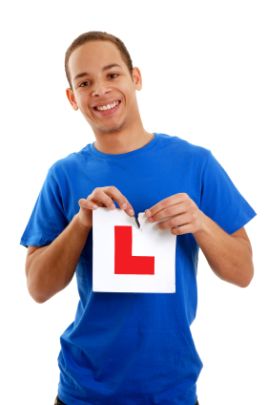Using the foot controls in an automatic
When driving an automatic car, there is one less pedal to think about: there is no clutch pedal so the ABC of accelerator, brake, clutch becomes instead simply accelerator and brake.
That's two pedals and you have two feet. So you should use one foot on the accelerator and one on the brake, right? Well, actually wrong, most would certainly recommend using the right foot to operate both of the pedals, even if this seems odd.
For those who play the piano or a keyboard instrument, if you have to play the same note repeatedly it is recommended that you actually switch fingers where possible when playing the same note. When driving an automatic, it is suggested to use the one foot in most situations.
The reason for this is that it helps with anticipation, alertness and awareness when driving: you have to move your foot from one pedal to the other, and of course it also stops you from performing both operations at the same time, e.g. both braking and accelerating, which clearly is not a good idea and is not good for the long term health of your car either.
The only exception generally given is when driving conditions are such that you are moving slowly, and repeatedly slowing down and speeding up: think queueing in traffic at rush hour and you've got the general idea of when it is fine to have one pedal on each to save having to continually swap, but otherwise it is best to using the same foot to operate the two pedals on the automatic car, accelerator and brake.
Related Articles...
Practical Driving Test
There is an online booking system available for a practical driving test which you can access from the DirectGov website.
The web address to do this is: ...
Rules for learner drivers
The minimum ages and restrictions vary from one type of vehicle to another.
When you are learning to drive, you must ensure that the vehicle you are learning to drive in is roadworthy and also...
The ABC of dealing with casualties
The ABC refers to how to treat casualties if you are involved in an accident but not injured, or indeed if you are at the scene where an accident occurs.
The A refers to the word airway. This...
Risks when driving: bright or low sun
When the sun is low and bright, it can be very hard indeed to drive. This is because we may have to squint and the bright light can make it hard to pick out objects and to see, sometimes right in...
Typical brake faults outlined
The brakes are a mechanical object and so it is possible that they will develop problems and not function the way that they should be. This is clearly very dangerous because brakes are one of the...
Tips on braking on snow and ice
Braking on snow and ice takes a lot longer than it does on a normal road in ordinary conditions. But you might be very surprised at how long it can take.
Infact tests have shown that it can...
What causes accidents: pulling out
One of the most typically seen accident that happens between vehicles in and around towns and city centres is the situation where two or more roads join each other.
At these there will be...
Maintaining your car
It is essential that you look after your car and keep it in good condition. Not only is this paramount for your safety and that of other road users, but also it means that the longevity of your car...
Mock Driving Theory
On our Mock Driving Theory page you can practice no fewer than fifteen different mock tests.
Each of them...
Things to look for when checking tyre condition
The tyres are extremely important elements of the car, yet many people do not think much about them when checking that their vehicle is roadworthy.
However, in addition to checking the amount...
Back to home page of driving theory test questions

